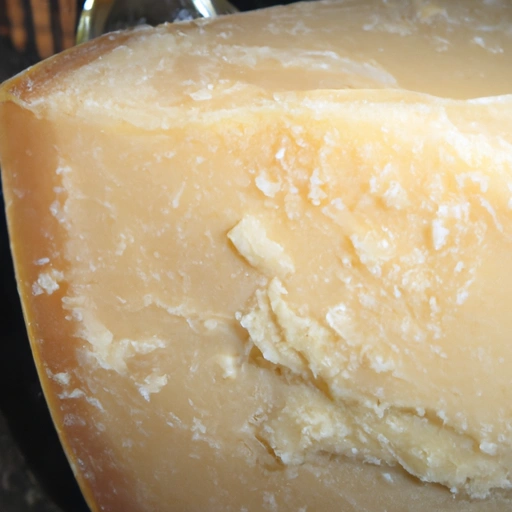Parmesan Cheese
Description

Parmesan cheese, known for its hard texture and sharp, nutty flavor, is a staple in many culinary preparations. Originating from Italy, this cheese has become an essential ingredient in various cuisines due to its unique characteristics and ability to enhance the flavors of a wide range of dishes. Parmesan is often grated over pastas, used in soups and risottos, or eaten on its own as a snack. Its versatility and distinctive taste have secured its place in the pantries of chefs and home cooks around the globe.
Common uses
Parmesan cheese is commonly used as a finishing touch to elevate the taste of dishes. It's grated over pizzas, incorporated into sauces, and sprinkled on top of salads. It can also be used as a savory addition to baking recipes, such as cheese scones or biscuits, and melted into a fondue. In its shredded form, Parmesan adds a delightful umami flavor and texture to gratins and baked casseroles.
Nutritional value
Calories
One ounce (28g) of Parmesan cheese contains approximately 122 calories.
Protein
Parmesan is a good source of protein, offering about 10.9 grams per ounce (28g).
Fat
There are about 7.9 grams of fat in a one-ounce (28g) serving of Parmesan cheese.
Carbohydrates
Parmesan is low in carbohydrates, with only 0.9 grams per one ounce (28g).
Vitamins
This cheese is a good source of vitamins such as B12 and riboflavin.
Minerals
Parmesan is rich in minerals like calcium, providing about 336 mg per ounce (28g), and phosphorus.
Health benefits
Due to its high calcium content, Parmesan cheese can be beneficial for bone health. The protein and amino acids present can also aid in muscle repair and growth. Moreover, the cheese contains probiotics that can improve digestion and gut health.
Potential risks
As with many cheeses, Parmesan is high in sodium and saturated fats, which can pose health risks if consumed in excessive amounts. People with lactose intolerance or dairy allergies should also avoid Parmesan.
Common recipes
Parmesan cheese is a key ingredient in classic recipes like Fettuccine Alfredo, Caesar salad, and Eggplant Parmesan. It's also essential for creating the perfect pesto sauce.
Cooking methods
While it is not typically the main focus of cooking methods, Parmesan is often added at the end of cooking to impart flavor or used in baking to create a golden crust on dishes.
Pairing with other ingredients
Parmesan pairs well with fruits like pears and figs, nuts such as walnuts and almonds, and is often accompanied by a glass of bold red wine or a crisp white wine.
Summary
Parmesan cheese is an age-old Italian cheese that has found its way into the hearts of food lovers worldwide. Its robust flavor profile, historical significance, and nutritional benefits make it an indispensable ingredient in both classic and modern culinary arts. Whether grated over pasta, melted into a creamy sauce, or savored on its own, Parmesan cheese continues to be a beloved addition to a myriad of dishes.